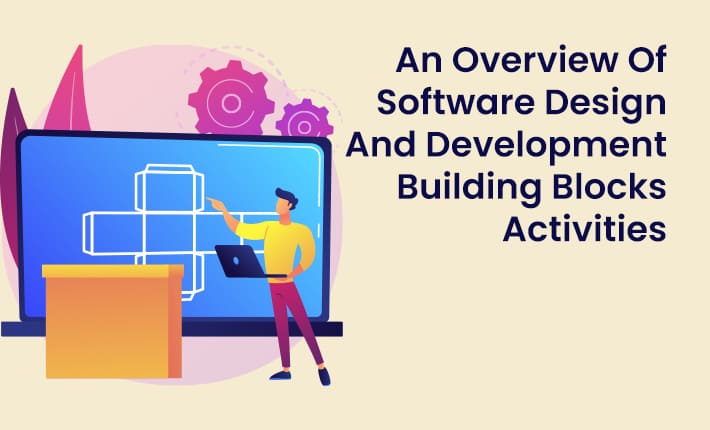There are several main building block activities involved in successful software design and development. While every software engineering project is totally unique, there’s a few universal building blocks that can typically be followed. Nearly every programmer will embrace these methods when designing, developing, delivering, and distributing new applications. These steps outline all the foundational items, elements, and requirements needed to bring your project vision to life. As an application engineer yourself, you should know what these core activities are – and determine how they fit into your software development lifecycle (SDLC). This way, you can implement these practices to maximize productivity, inspire workflow management, and accelerate release dates. Read on for an overview of software design and development main building block activities.
Software Architecture Design
Traditionally, the software design and development lifecycle begins with architecture-level design. Software architecture design typically occurs after requirements gathering – but before coding. Expect to spend up to two weeks planning, designing, and implementing your architecture ideas. During this stage, you’ll also need to define new elements, specify interactions, and guarantee compliance with app requirements. Depending on functionality, you may also want to start writing algorithms at this point. Certainly, system architecture design is one of the most common and essential software development building blocks activities.
Tech Stack Configuration
Once the software architecture is ready, start configuring, installing, and integrating your tech stack. There’s several helpful development tools, programming resources, and supporting technologies to implement throughout the process. You can use a Helm repository by JFrog to store and scale up management of Helm charts. There are other useful tools such as a Docker Hub to securely manage the whole teams suite of Docker images.
Chatbots, Forms, And Plug-Ins Integrations
At this point, it is time to start integrating powerful chatbots, forms, and plug-ins into the software application. Many state-of-the-art rely on these innovative solutions to advance, improve, and optimize functionality – without the need for additional coding. Use targeted chatbots to capture more leads and maximize conversions. Or, set up automated forms that dynamically qualify prospects and streamline engagements. Leverage these integrations to offer users live chat, instant meetings, or scheduled conferences. With ready-made integrations, you can save a great deal of time, energy, and resources throughout the SDLC. After all, your team won’t have to build each functionality individually. Indeed, integrate advanced chatbots, forms, and plug-ins as a primary building block activity during software development.
Quality Assurance (QA) Test Sequence Planning
Now, you are ready to start planning quality assurance test sequences and cases. Establish a clear quality specification to align your tests with. If they do not meet the specified benchmarks, send the application back to coding teams. Following these practices is a great way to prevent catastrophic corporate emergencies, inspire stakeholder confidence, and maximize system quality. There’s several different categories of testing you’ll want to perform. Most importantly, teams run unit, functionality, security, and performance tests on their systems. Absolutely, dedicate time for QA testing building blocks activities.
Post-Release Governance
Some of the software development building block activities occur after the system is actually released. This is generally when post-deployment tasks and practices take place. These core activities focus on guaranteeing consistency across users, devices, networks, and systems. For governance, you should create a set of well-documented rules, processes, and standards. Set protocols that cover current system functionality, as well as long-term future operations. Additionally, create a routine maintenance, update, and versioning schedule that you can follow going forward. Definitely, post-release governance activities occur after your software system is officially released.
There are several core building block activities needed for successful software design and development. Traditionally, the process begins with planning, designing, and implementing application architecture. Next, configure your tech stack with the latest development tools, programming resources, and supporting technologies. From here, install powerful plugins that advance and optimize your functionality. With everything coming together, it’s time for software quality assurance (SQA) testing. After the tests are executed and the system is released, you are ready for post-deployment governance activities. This is where you’ll ensure your platform is operating properly across users, devices, platforms, and locations. Follow the points above for an overview of software design and development main building block activities.














Post Comments